HEIDELBERG, Germany - In the last few years, paintball has become one of the fastest growing sports in the world, including competition found on installations belonging to Installation Management Command-Europe.
The high-intensity team activity consists of players firing paint-filled gelatin capsules at their opponents. Upon impact, the capsule explodes, leaving a quarter-sized mark on a player's uniform, signifying their elimination from the game.
And at garrisons located throughout the region, paintballers can be found firing away.
For example, the chance to play at U.S. Army Garrison Grafenwoehr is offered by Rose Barracks Outdoor Recreation.
"It's fun and exhilarating," said Lucas Anderson, USAG Grafenwoehr ODR recreation assistant. "You're shooting at other people and getting shot at ... You get an adrenaline rush."
At Grafenwoehr, the sport is open to military ID card holders 18 years and older, and is offered in two separate categories: woodsball and speedball.
Woodsball, a version in which players hunt and stalk their opponents in a forested area, can last up to five hours. Speedball is set in a more confined area with inflatable obstacles separating the teams.
"Woodsball is where you run around in the woods and shoot people until one team is finished, or you run out of (ammunition) ," Anderson said. "In speedball, you have a little aired-up triangle ... that you place in a small area and everybody shoots. It's much smaller and everything is faster."
With a minimum of eight players per session, Anderson said that the steady movement is more than a game of strategy.
"You can get (physical training) from it. You're moving a lot; you're jumping around ... you're exercising. It's a whole day of being on the range ... it's fun PT," he said.
Aside from PT, he said units can use the game a way to build cohesion.
And the fun, Anderson added, outweighs the small sting felt upon impact.
"It's like getting snapped with a rubber band or snapped with a wet towel," he said.
As for safety, the Paintball Sports Trade Association notes a survey that cites only one injury is reported for every 4,000 players, making paintball one of the safest sports there is when regulated and when the rules are followed.
"As long you're keeping to the rules and regulations, it's safe," Anderson agreed.
Just a few miles away from Grafenwoehr, USAG Hohenfels has approved a project to construct four outdoor speed paintball fields and one indoor field by next spring.
The paintball fields will be the most state-of-the-art design in IMCOM-Europe, said Kurt Hahn, USAG Hohenfels Outdoor Recreation director.
"When we're done, we'll have the premier setup in Germany, in Europe. No one will have anything close," he said. "It will be beyond even most tournament playing fields."
The indoor fields, which will accommodate up to eight teams at once - two squads per field on four fields - will be housed in what is now the fitness center. Its completion date is set two to four months after the fitness center is relocated within the post gym, sometime in early 2009.
"I'm really excited about having indoor and outdoor fields, said Hahn. "That way, we'll have options to play year-round. We can go inside and play in the winter or when it is raining."
Hahn said he is working on acquiring more paintball equipment in preparation for the new fields. This fall, Hohenfels Outdoor Recreation purchased 10 new industry standard markers with high-pressure bottles. By the time the fields are complete, the center should have 60 markers for check out.
"The command is putting a lot of money into the Soldiers here," Hahn noted.
Lenny Ingram, community recreation director for Hohenfels' Family, Morale, Welfare, and Recreation, said paintball is becoming increasingly popular in the United States. It is a priority for Army outdoor recreation centers in part because it is popular overall with the 18- to 25-year-old age group, one of the military's largest demographics.
"It comes from people wanting to be outside and actually doing something, not sitting on the couch playing video games," said Hahn.
The idea for the project was generated at a week-long garrison conference last June that focused solely on improving quality of life for single Soldiers.
"After wireless Internet in the barracks, the Soldiers made paintball their biggest priority," said Ingram.
"Our garrison commander took the time to listen to their concerns," he said. "We're trying to let (single Soldiers) know they're a (top) priority. This was Soldier-driven. The command put emphasis behind it, and now we're following through."
Back in May, Jim Watkins, a paintball instructor and coordinator for USAG Ansbach, was one of 13 garrison-level Outdoor Recreation employees that attended a three-day paintball training course held by the IMCOM-Europe Workforce Development Center.
"They brought a professional player (Ryan Podesta) from the States who showed us how to run a field, how to work on markers, how to run the drills for the training teams - it went really well," said Watkins.
"What I do is show course managers the many different ways to set up playing fields," said Podesta. "How to make it challenging. How to make it fun. How to make it distinctive. You don't want a boring course. That is why people stop participating - in anything.
Plus, Podesta added, because the military is so "team focused, you have to design competitive play that encourages everyone working together. Meaning, you need to design a field that takes strategy to win - not just a John Wayne type blazing away."
"It is a team sport," Watkins said. "It ends up being a chess game; it's team building because you have to communicate on the field to each other or you won't win the game."
Ansbach runs a paintball season from April to October, offering tournaments at the beginning, middle, and end of play.
At USAG Baumholder, competition is held woodsball field. "I can almost guarantee it's the largest such field in Europe that the military owns," said Werner Graf, the garrison Outdoor Recreation manager.
"We constantly have people coming from the Kaiserslautern area, from Spangdahlem and Wiesbaden because we are open every weekend," he said, adding that "we've had up to 180 people play on this field at one time. This will give you an idea of the size."
Baumholder's Outdoor Recreation, located directly across the street from the paintball field, has the standard paintball equipment available or customers may bring their own equipment. And there are referees on the field at all times. "There is no role playing. You just don't go out there on your own. It's always played in teams," said Graf.
For paintball enthusiasts in the Heidelberg area, volunteers make it happen at the Heidelberg Rod and Gun Club.
The man everyone points to when paintball is mentioned in the club is Thorsten Ries, a German paintballer who volunteers about 20 hours a week to maintain the playing fields and help others enjoy the game.
Most of the time Ries spends at the fields is on Saturdays, when organized teams play the fields, and Sundays when the fields are open to the public. On Sundays, Reis said he tries to keep the rookies from playing against the more experienced players, but everyone can play as long as they want.
"It's just a matter of how much money they want to spend on paint," Ries said.
And, "You see a lot of camaraderie between the Germans and Americans out here," he added.
In addition to weekend hours, the paintball fields are available to groups Wednesday through Friday by appointment.
One unit that took advantage of that arrangement was the Headquarters and Headquarters Company of the U.S. Army NATO Brigade.
"We had to do warrior task training," said the unit commander, Capt. Ryan Donald. "To make it effective, we figured paintball (would make it) more realistic."
The unit was able to incorporate some medical training into the game with the help of a medic from the Heidelberg Health Center, as well as some media on the battlefield training with help from the U.S. Army Garrison Baden-WAfA1/4rttemberg Public Affairs Office.
"It was a great training event," Donald said. "It was out of the ordinary and the results paid off ... We're already looking into doing it again."
"Paintball competition is an awesome way to have some great fun and exercise while developing team work and communication skills among all participants," said Kelly Nebel, IMCOM-Europe Outdoor Recreation program manager.
(Information provided by Mary Markos, Kristin Bradley, Ron Toland, Iggy Rubalcava and Jason Austin)
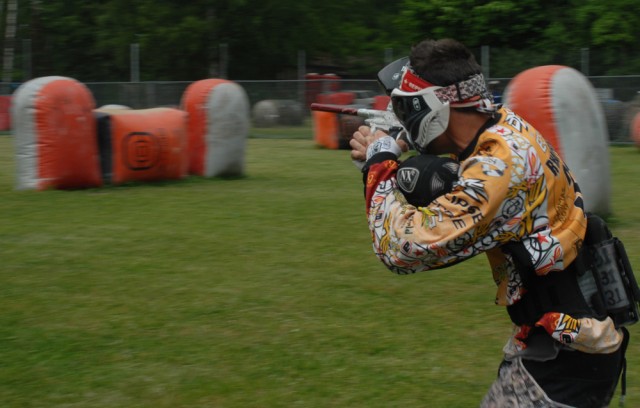
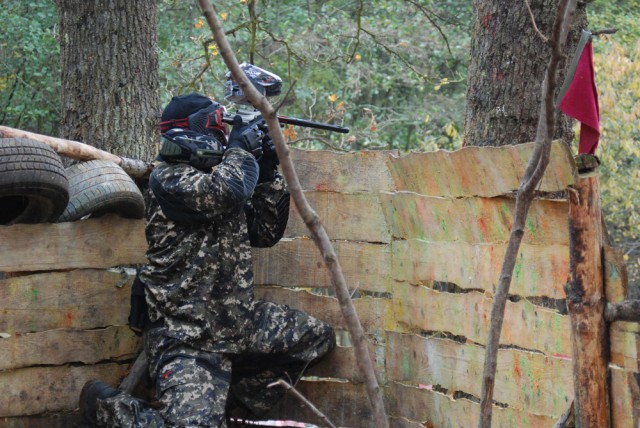

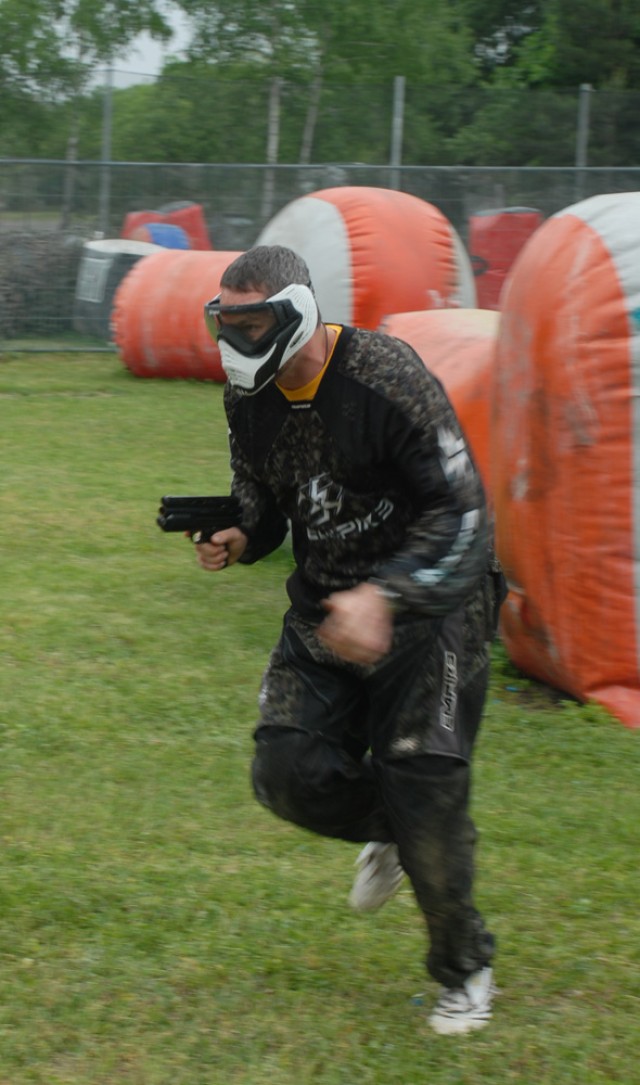


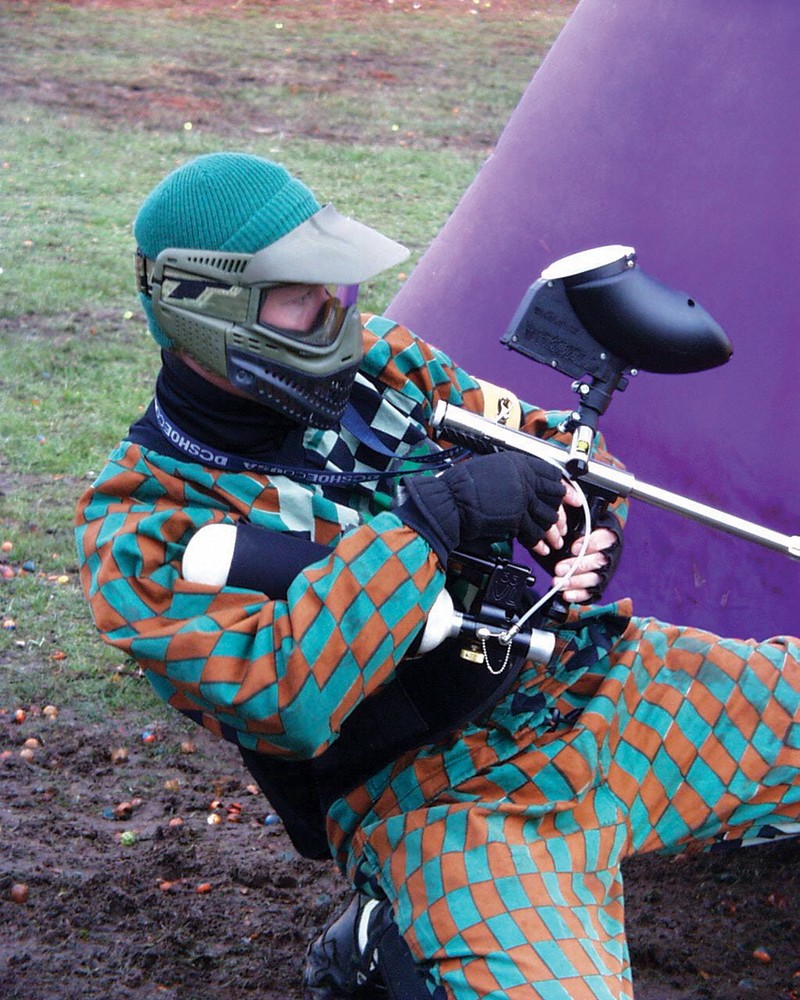
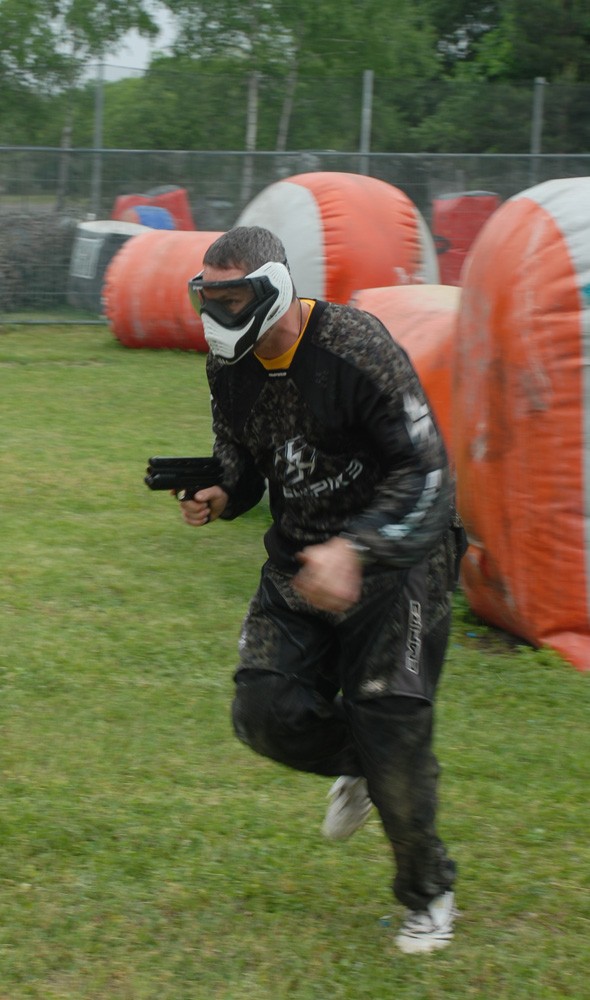
Social Sharing